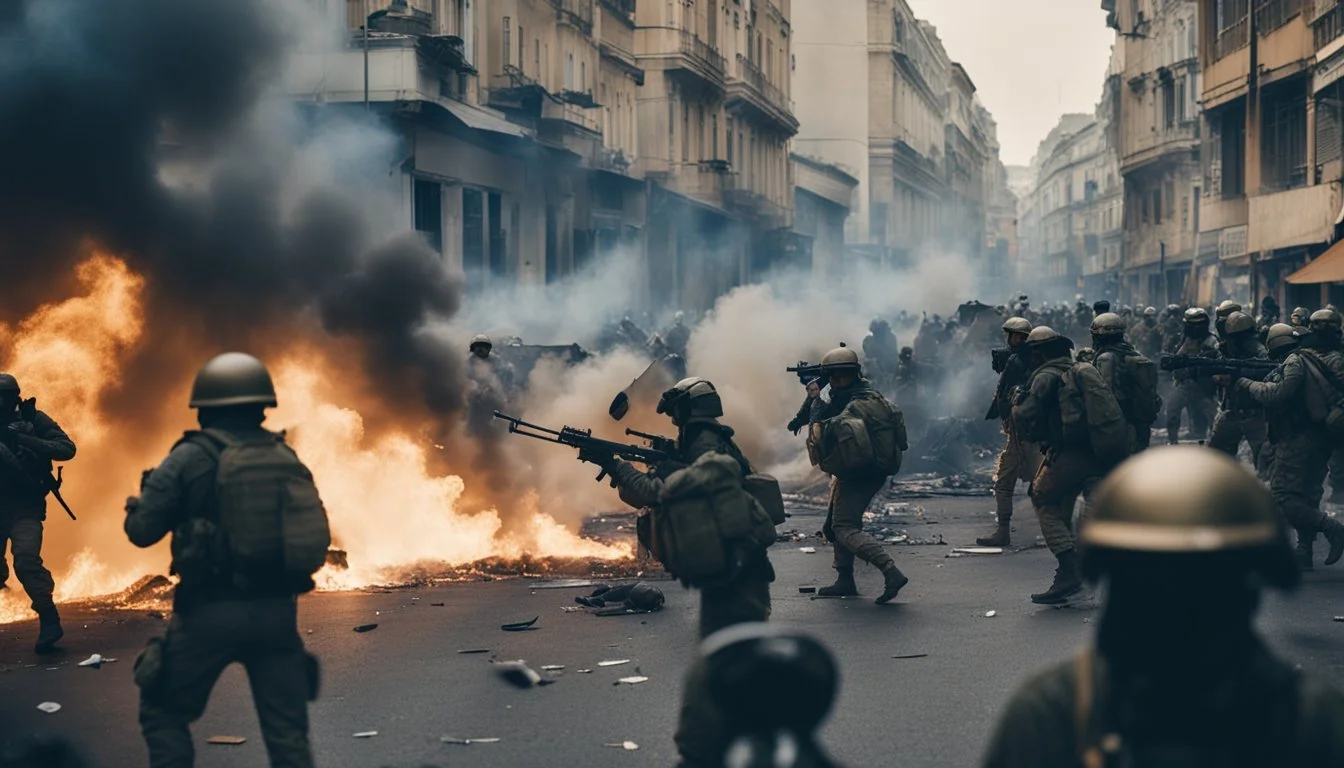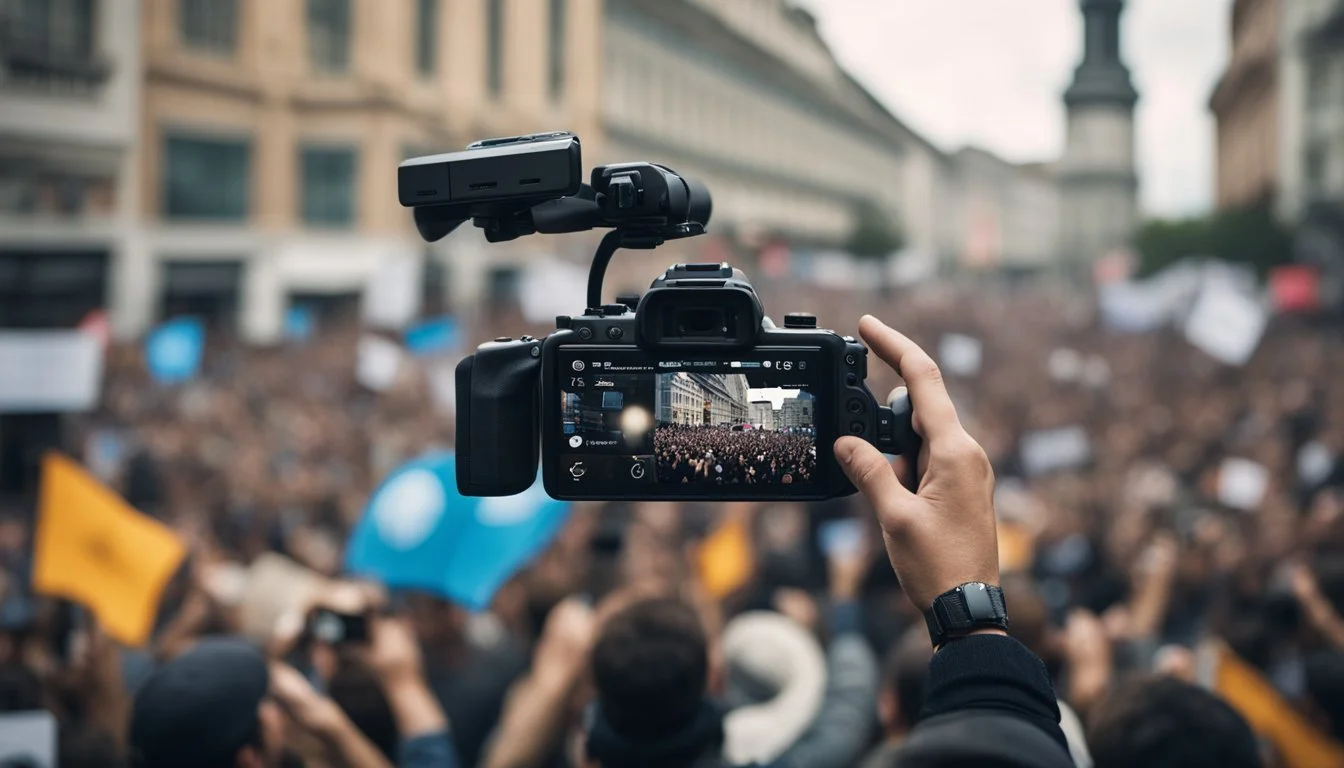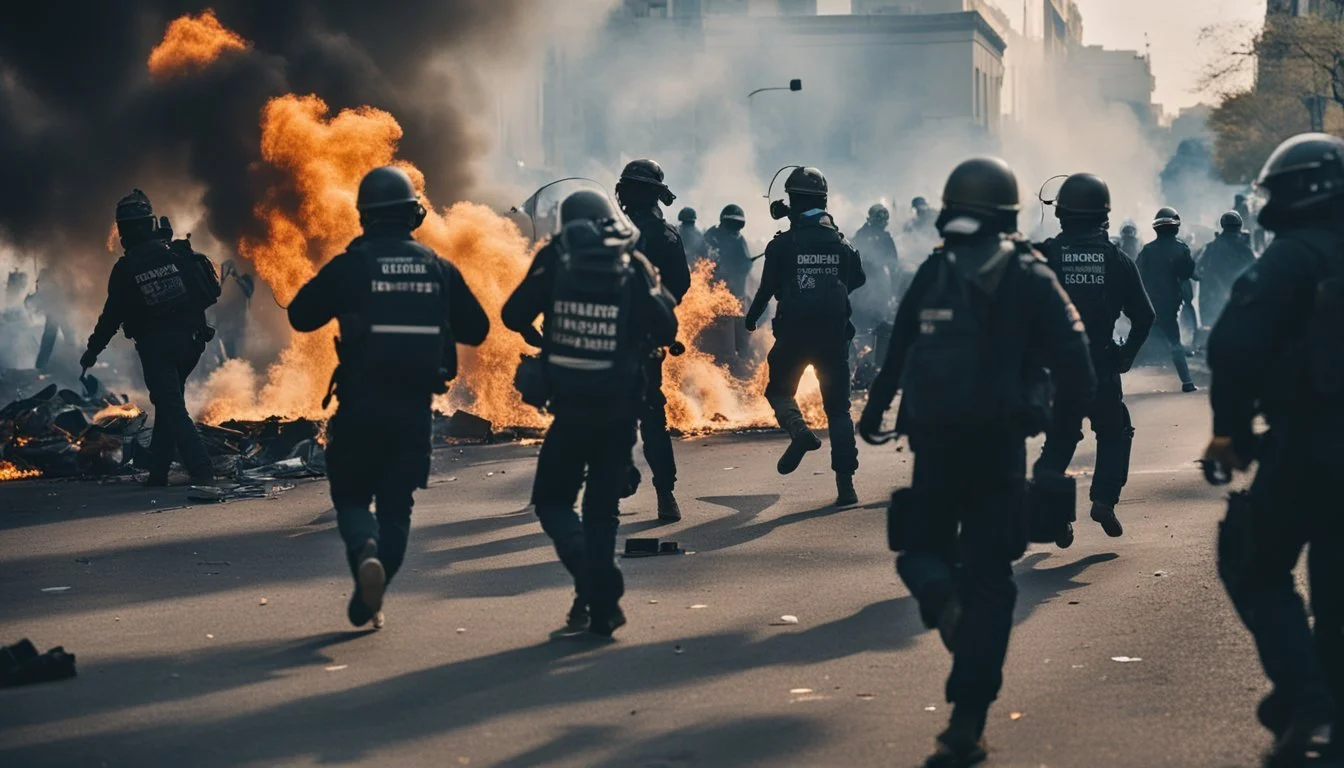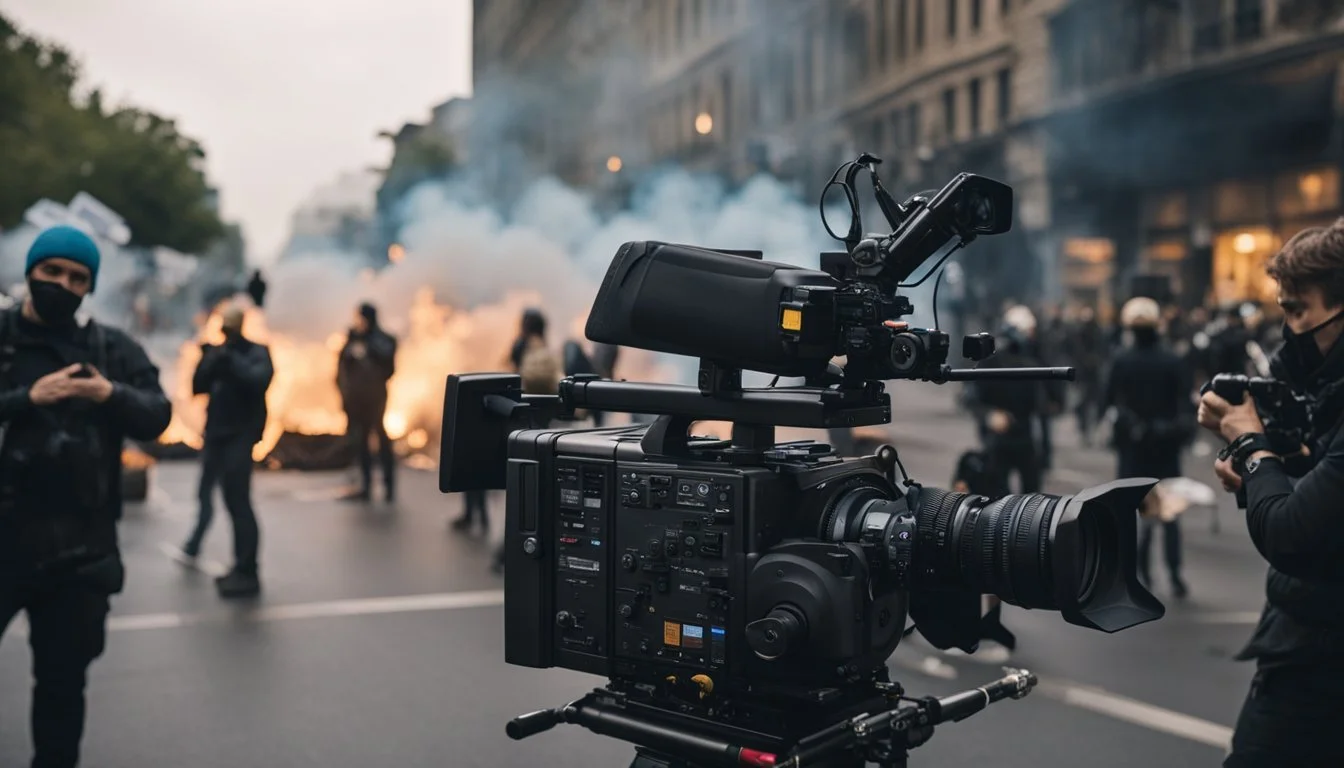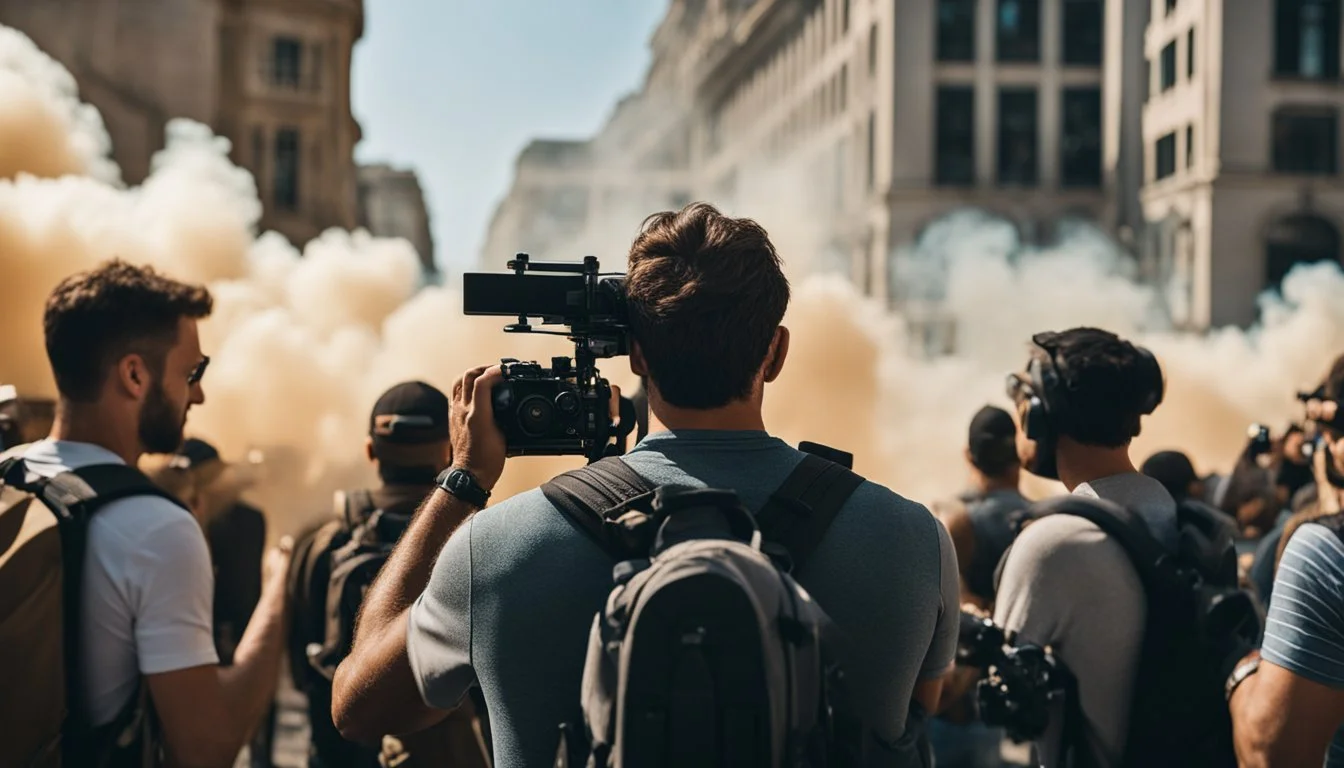The Square Documentary Filmmakers Risk Lives to Capture Egyptian Revolution
"The Square" stands as a powerful testament to the risks filmmakers face when documenting political unrest. This award-winning documentary captures the intensity of the Egyptian Revolution, following three activists as they navigate the tumultuous events in Cairo's Tahrir Square.
While "The Square" offers a beautiful portrayal of revolutionary fervor, its creation exposed the filmmakers to significant dangers. Director Jehane Noujaim and her crew found themselves in the midst of violent clashes, tear gas attacks, and military crackdowns as they strived to capture the raw emotions and experiences of their subjects.
The film's intimate perspective on the revolution comes at a cost. Filmmakers on the frontlines of such events must grapple with ethical dilemmas, personal safety concerns, and the risk of government retaliation. Their commitment to telling these stories highlights the vital role documentary films play in bearing witness to history, even as it unfolds in unpredictable and often perilous ways.
The Role of Documentaries in Capturing History
Documentaries serve as powerful tools for recording and interpreting historical events. They provide visual evidence and firsthand accounts, offering viewers a window into pivotal moments that shape societies. These films play a crucial role in preserving democratic values and chronicling social movements.
Preserving Democratic Processes
Documentary filmmakers often capture critical moments in democratic systems. They record election processes, political debates, and public demonstrations. These films provide visual records of how democracy functions in practice.
Documentaries like "The War Room" (1993) offer behind-the-scenes looks at political campaigns. Others, such as "Knock Down the House" (2019), follow grassroots candidates challenging established politicians. Such films preserve the nuances of democratic engagement for future generations.
Filmmakers also document threats to democracy. They expose corruption, highlight voter suppression, and reveal abuses of power. These documentaries serve as watchdogs, holding leaders accountable and informing citizens about the state of their democratic institutions.
Highlighting Social Change
Documentaries play a vital role in documenting social movements and cultural shifts. They provide visual narratives of protests, community organizing, and the evolution of societal norms.
Films like "The Square" (2013) capture the energy and complexity of social uprisings. They preserve the voices of activists and ordinary citizens involved in historical moments. These documentaries offer future viewers insights into the motivations and experiences of those pushing for change.
Filmmakers also chronicle long-term social transformations. They document changes in attitudes toward issues like civil rights, gender equality, and environmental protection. These films create a visual archive of society's progress and ongoing challenges.
Filmmakers as Journalists
Documentary filmmakers increasingly take on roles similar to investigative journalists, diving into complex stories and uncovering hidden truths. This blending of disciplines brings unique challenges and responsibilities.
Ethics and Accountability in Reporting
Filmmakers acting as journalists must adhere to strict ethical standards. They need to verify sources, fact-check information, and present balanced perspectives. Transparency is crucial - audiences should understand how information was obtained and any potential biases.
Filmmakers face accountability for their work. They must be prepared to defend their findings and methods. This often involves meticulous record-keeping and documentation of their process.
Ethical considerations extend to protecting sources and subjects. Filmmakers must weigh the public interest against potential harm to individuals featured in their documentaries.
The Importance of Investigative Journalists
Investigative journalists play a vital role in uncovering systemic issues and holding power to account. Filmmakers taking on this role bring visual storytelling skills to complex topics, making them more accessible to wider audiences.
These filmmaker-journalists often spend years on a single project, developing deep expertise in their subject matter. This long-form approach allows for nuanced exploration of issues that may be overlooked in daily news cycles.
Their work can spark public discourse, influence policy changes, and even lead to legal actions. Examples include documentaries exposing corporate malfeasance or government corruption.
Filmmakers in this role face unique challenges, including limited resources and potential legal threats. They must navigate complex ethical terrain while striving to tell compelling, truthful stories.
Navigating Dangers in Conflict Zones
Filmmakers documenting conflicts face numerous risks and challenges. They must balance capturing crucial footage with protecting themselves and their subjects in highly volatile environments.
Documenting in War Zones
War zones present extreme dangers for filmmakers. Bullets, bombs, and other weapons pose constant threats. Journalists and documentarians must wear protective gear like helmets and body armor.
They also risk detention or harassment by military forces or armed groups. Obtaining proper credentials and permissions is crucial but not always possible.
Filmmakers must be aware of landmines, unexploded ordnance, and damaged infrastructure. Medical care may be limited if injuries occur.
Case Studies: Ukraine and Donbas
Ukraine's conflict zones have been particularly perilous for filmmakers. In eastern Ukraine's Donbas region, documentarians face risks from artillery shelling and sniper fire along the front lines.
Ukrainian filmmaker Leonid Kanter initially joined the National Guard but returned to filmmaking. He found he could contribute more effectively with a camera than a gun.
Other filmmakers in Ukraine have embedded with military units to capture frontline footage. This provides unique access but heightens dangers from enemy fire and air strikes.
Documenting civilian impacts in conflict areas carries its own risks. Filmmakers must navigate checkpoints and potential hostility from local residents.
Legal and Ethical Considerations
Documentary filmmakers face complex legal and ethical challenges when capturing sensitive events. Balancing the pursuit of truth with respect for privacy and safety is critical.
Privacy and Consent
Obtaining informed consent from subjects is paramount in documentary filmmaking. In conflict zones, this can be particularly challenging. Filmmakers must clearly explain potential risks to participants.
Protecting identities may be necessary to prevent retaliation. Blurring faces, altering voices, or using pseudonyms can help safeguard vulnerable individuals.
Filmmakers should be transparent about their methods and intentions. They must respect subjects' right to withdraw consent at any time.
Careful consideration of cultural norms and local laws is essential. What may be acceptable in one context could be dangerous or illegal in another.
Documenting War Crimes
Documenting war crimes requires meticulous attention to detail and adherence to legal standards. Filmmakers must understand international humanitarian law to identify potential violations.
Preserving the integrity of evidence is crucial. Maintaining clear chains of custody for footage and following proper documentation protocols is essential.
Filmmakers should work with legal experts to ensure their work can potentially be used in future prosecutions. This includes recording precise dates, times, and locations of incidents.
Balancing the need to expose atrocities with the safety of victims and witnesses is a constant challenge. Filmmakers must assess risks carefully and prioritize protecting their sources.
The Impact of Social Media on Documentary Filmmaking
Social media platforms have revolutionized how documentary films are created, distributed, and consumed. These digital tools provide filmmakers with new avenues for research, audience engagement, and social impact.
Content Sharing Platforms
Documentary filmmakers leverage content sharing platforms to reach wider audiences and spark conversations. YouTube serves as a powerful distribution channel, allowing filmmakers to upload trailers, behind-the-scenes footage, and even full-length documentaries. This accessibility enables independent creators to bypass traditional gatekeepers and connect directly with viewers.
Facebook's video features offer similar opportunities for sharing documentary content. Filmmakers use the platform to build communities around their projects, fostering discussions and mobilizing supporters. The ability to livestream events and Q&A sessions enhances audience engagement.
These platforms' algorithms can amplify documentary content, potentially exposing films to millions of viewers. However, filmmakers must navigate challenges like content moderation policies and the risk of their work being overshadowed by viral entertainment.
The Role of Facebook and YouTube
Facebook and YouTube play crucial roles in documentary filmmaking beyond content distribution. These platforms serve as valuable research tools, allowing filmmakers to identify stories, connect with subjects, and gather real-time information on evolving situations.
Documentary creators use Facebook groups to build networks of experts, activists, and supporters around specific topics. This community-building aspect can be instrumental in crowdfunding efforts and grassroots marketing campaigns.
YouTube's vast archive of user-generated content provides filmmakers with a rich source of primary footage. This can be particularly valuable for historical documentaries or projects covering rapidly unfolding events.
Both platforms offer analytics tools that help filmmakers understand their audience demographics and engagement patterns. This data can inform storytelling decisions and impact strategies, enabling creators to tailor their content for maximum social change potential.
Technological Advancements in Filmmaking
Digital innovations have transformed modern filmmaking. New cameras, equipment, and software enable filmmakers to capture higher quality footage and manage data more efficiently.
Innovations with Cameras and Equipment
Digital cinema cameras now offer incredible resolution and dynamic range. The ARRI Alexa, RED cameras, and Sony Venice capture 4K+ footage with over 14 stops of dynamic range. Smaller mirrorless cameras like the Sony A7S III allow for more mobile, guerrilla-style shooting.
Drones equipped with stabilized cameras provide dramatic aerial shots that were once prohibitively expensive. Lightweight carbon fiber rigs and motorized gimbals give operators smooth handheld movement.
LED lighting panels offer adjustable color temperature and intensity. This allows crews to quickly adapt to changing conditions on location without heavy, power-hungry traditional lights.
Software for Data Management
Sophisticated media asset management systems help organize the massive amounts of footage generated during production. Databases track metadata like camera settings, take numbers, and script notes.
Cloud-based platforms allow instant sharing of dailies with remote team members. Editors can start assembling scenes while shooting is still underway.
Machine learning algorithms assist with tasks like automatically syncing audio and organizing clips by content. This frees up time for more creative work.
Secure digital workflows protect valuable intellectual property as files move between different departments and vendors during post-production.
Collaboration and Communication in Documentary Production
Documentary filmmaking relies heavily on effective teamwork and external relationships. Clear communication channels and trust are crucial for navigating the challenges of capturing unfolding events.
Team Collaboration
Documentary production teams must work seamlessly to capture unscripted moments. Directors, producers, and camera operators coordinate closely in the field. They share information rapidly and make quick decisions as situations evolve.
Editors play a key role in shaping the narrative from raw footage. They collaborate with directors to craft the story structure. Regular feedback sessions help refine the edit.
Sound designers and composers work with the director to enhance the emotional impact. Their contributions often come later in post-production. Clear creative briefs ensure their work aligns with the director's vision.
Interaction with Correspondents and Contacts
Building trust with local correspondents is essential for accessing sensitive areas. Filmmakers rely on these contacts for on-the-ground information and introductions to potential subjects.
Safety considerations are paramount when working with sources in conflict zones. Encrypted communication tools help protect identities. Meeting locations are carefully chosen to avoid putting anyone at risk.
News organizations like the Associated Press can provide valuable connections. Their bureaus often have established relationships with local officials and community leaders.
Maintaining open lines of communication with subjects after filming is important. It allows for fact-checking and obtaining any necessary follow-up material.
Prominent Figures in Frontline Documentaries
Frontline documentaries showcase the work of brave filmmakers who capture critical events and stories around the world. These individuals risk their safety to bring important issues to light through their lens.
Profiles: Alina Gorlova and Other Filmmakers
Alina Gorlova stands out as a notable filmmaker documenting conflict zones. Her work in Ukraine has provided raw, unflinching footage of the ongoing war. Gorlova's films offer intimate portraits of citizens caught in the crossfire.
Other prominent Frontline documentarians include James Bluemel, known for his series on the refugee crisis, and Waad al-Kateab, who filmed life in Aleppo during the Syrian civil war. These filmmakers often embed themselves in dangerous situations to capture authentic stories.
Many use innovative techniques like handheld cameras and drone footage to provide unique perspectives. Their work sheds light on complex global issues and amplifies the voices of those affected by conflict and social upheaval.
Analytical Approaches to Documentary Content
Documentary filmmakers employ various analytical techniques to craft compelling narratives and uncover deeper truths. These approaches involve careful examination of storytelling methods and the use of diverse research materials, including email records.
Analysis Techniques in Storytelling
Filmmakers analyze their footage through qualitative methods, drawing from both documentary and research practices. They scrutinize video interviews as data, examining subjects' responses, body language, and environmental context. Editing choices are made to construct a coherent narrative arc, balancing emotional impact with factual accuracy.
Visual analysis plays a crucial role, with directors evaluating framing, lighting, and composition to convey mood and meaning. Sound design is equally important, as filmmakers analyze ambient noise and musical scoring to enhance the viewer's emotional engagement.
Some key analysis techniques include:
Thematic coding of interview transcripts
Scene-by-scene breakdown of narrative structure
Assessment of visual symbolism and metaphor
The Significance of Email Records in Research
Email records provide valuable insights into the documentary-making process and subject matter. Filmmakers analyze these digital communications to verify facts, understand timelines, and uncover additional leads for investigation.
Email exchanges between subjects can reveal candid thoughts and reactions not captured on camera. This information helps directors fill gaps in the narrative and provides context for on-screen events.
Researchers examine email metadata to establish chronologies and patterns of communication. This analysis can uncover hidden connections or corroborate witness accounts.
Ethical considerations are paramount when using email records. Filmmakers must balance transparency with privacy concerns, ensuring proper consent and data protection measures are in place.
From Concept to Screen: The Production Lifecycle
Creating a documentary like "The Square" involves multiple complex stages. Each phase presents unique challenges and requires careful planning, execution, and adaptation.
Pre-Production and Research
Documentary filmmaking begins with extensive research and planning. Filmmakers identify key subjects, locations, and themes to explore. They conduct background research on the Egyptian revolution and its participants. Securing access and building trust with potential interviewees is crucial.
Directors and producers develop a loose shooting script to guide the filming process. This outlines potential scenes, interviews, and narrative arcs. Budgeting and securing funding are essential steps. The team assembles necessary equipment and obtains filming permits where possible.
On-Site Filming Challenges
Filming in volatile situations demands flexibility and quick thinking. Camera operators must capture key moments while prioritizing safety. Directors make real-time decisions on what to film and when to pull back.
Unexpected events can derail planned shoots. Political demonstrations may turn violent, forcing the crew to adapt. Building rapport with subjects is crucial for authentic storytelling. Filmmakers must balance capturing raw emotions with respecting individuals' privacy and safety.
Technical challenges arise from unpredictable environments. Sound quality suffers in noisy protests. Low-light situations test camera capabilities. The team must be prepared to work with limited resources and improvise solutions.
Post-Production and Editing Narratives
In post-production, filmmakers sift through hours of footage to construct a coherent narrative. Editors piece together scenes that best convey the story's essence. They balance different perspectives to present a nuanced view of events.
Sound design enhances the viewer's experience. Careful audio editing can heighten tension or evoke emotion. Music selection complements the visual storytelling.
Fact-checking and legal review are critical steps. The team verifies claims made in interviews and ensures fair representation. Filmmakers may need to obscure identities to protect vulnerable subjects.
Documentary Features on Frontline Experience
Frontline documentaries provide raw, unfiltered glimpses into war zones and conflicts. These films capture the realities of life under siege and the human toll of invasion.
Spotlight on '20 Days in Mariupol'
'20 Days in Mariupol' offers a harrowing look at the Russian siege of the Ukrainian port city. The film follows Associated Press journalists as they document the destruction and humanitarian crisis.
Viewers witness bombed hospitals, mass graves, and desperate civilians seeking safety. The documentary highlights the challenges of reporting from an active war zone, with journalists facing danger and limited resources.
Footage shows Ukrainian defenders attempting to hold the city against overwhelming Russian forces. The film serves as a crucial historical record of the conflict's early days.
Evaluating the Russian Invasion
Frontline documentaries examine the broader context and impacts of Russia's invasion of Ukraine. Films analyze military strategies, international responses, and the war's effects on civilians.
Documentaries explore the siege of Kyiv and Ukraine's successful defense of its capital. Interviews with military experts and government officials provide insights into the conflict's progression.
Films also investigate war crimes allegations and efforts to document atrocities. The long-term geopolitical implications of the invasion are explored through in-depth reporting and analysis.

